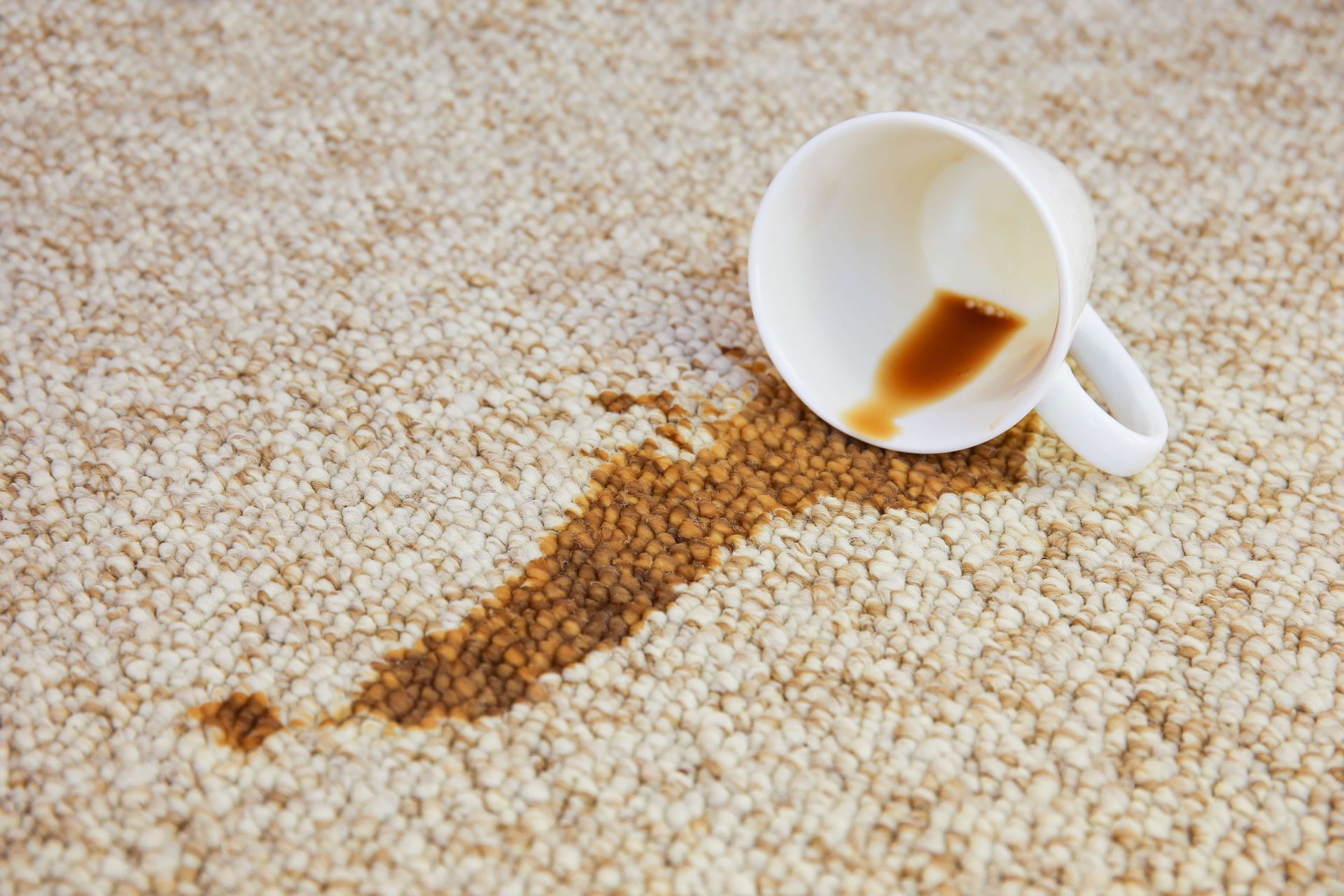The Science Behind Stain Removal: Why Some Stains Won’t Come Out
You’ve tried everything including blotting, scrubbing, expensive sprays, and that stubborn stain is still sitting there. Why won’t some stains come out, even after professional cleaning? The answer lies in carpet stain chemistry, fibre type, and how quickly you act. Carpets made from nylon or olefin have dye sites that can permanently absorb foreign colours. Some stains, especially protein or dye-based ones, chemically bond with carpet fibres, making them nearly impossible to remove without the right method.
If the stain has set due to heat or time, even professional stain removal may not restore it fully. This guide explains the science of stain removal about what works, what fails, and why timing matters.

The Chemistry of Stains: What’s Really Happening
If stains aren’t coming out, it’s not always because of poor cleaning. It’s because of how stains chemically interact with carpet fibres. A stain forms when a substance bonds with the surface either physically by absorption or chemically by molecular attraction. This is where carpet stain chemistry matters most. Synthetic carpets like nylon or olefin have dye sites. These are tiny areas that hold the original colour of the carpet. But the issue with these tiny areas is that many stains like red wine or ink carry dyes that latch onto these same sites. Once bonded, removing them without damaging the fibre is difficult.
Natural fibres like wool absorb moisture more deeply. They don’t have dye sites, but they soak up liquids quickly, locking stains in fast. Understanding these materials is key to effective professional stain removal. The wrong approach can make things worse, not better.
Types of Stains and Their Chemical Behaviour
If a stain isn’t coming out, the reason is likely tied to what it’s made of. Each stain has a different chemical structure, and not all respond the same to cleaning. Some stains are water-soluble and come out easily with basic cleaning. Others like oil-based or protein stains bond deeply with fibres and need targeted solutions. Dye-based stains attach to dye sites, making them hard to remove without the right pH and chemical reaction, which is a common challenge in professional carpet stain removal. Some stains are even a mix requiring multi-step cleaning.
Here’s a breakdown of different stain types and how each should be treated:
| Stain Type | Common Examplese | Cleaning Approach |
|---|---|---|
| Water-soluble | Wine, juice, tea | Blot + mild detergent |
| Oil-based | Grease, makeup | Solvents, surfactants |
| Protein-based | Blood, milk, egge | Enzymatic cleaners, cold water |
| Dye-based | Ink, colored drinks | Oxidizers + alkaline cleaners |
| Complex | Chocolate, ketchup | Combo of surfactant + enzyme |
Why DIY Cleaning Often Fails
Most stains don’t come out because the wrong method is used early on. If you're cleaning without understanding carpet stain chemistry or fiber type, you're more likely to set the stain than remove it. Most DIY cleaning fails due to less understanding about the stain type and how to handle it.
- Wrong cleaning products: Using vinegar or baking soda on dye-based stains can make the color lock deeper into the fibers. Not all stains respond to natural cleaners.
- Scrubbing instead of blotting:
Scrubbing pushes the stain deeper, frays the fibers, and spreads it out. Permanent carpet stains often result from aggressive rubbing.
- Applying heat on protein stains:
Heat causes protein stains like blood or egg to cook into the carpet. Once set, these stains are nearly impossible to lift, even with professional stain removal.
- Using too much water: Over-wetting soaks the underlay and causes wicking. The stain might look gone—but returns as the carpet dries. This is why methods like hot water extraction are often needed to fully flush out deep-set residue and prevent reappearing stains.
- Ignoring fiber type: Wool reacts differently to moisture than nylon. Synthetic fibers like olefin resist stains but hold oil. Treating every carpet the same causes damage or worsens the stain.
How Professionals Approach Stain Removal
Some stains just won’t respond to DIY efforts. This doesn’t mean the carpet is ruined, rather it means the stain needs a smarter approach. Professional stain removal isn’t about guesswork. It’s a process built on experience and understanding the science of stain removal.
- Stain and fibre identification comes first: Pros check the carpet fibre (nylon, wool, olefin) and determine the stain type—oil, protein, dye, or complex. Treating blood on wool is not the same as treating ink on polyester.
- Products are pH-matched to the stain: A stain’s acidity or alkalinity matters. Using the wrong pH level can set the stain permanently. Pros test this before applying anything.
- Specialised methods are used, not general cleaning: Enzymatic cleaners break down protein-based stains like food, blood, or pet accidents. For others, professionals may use hot water extraction, solvents, or encapsulation based on the stain’s structure.
- Realistic results are always part of the service: Even with advanced tools, not every stain disappears 100%. Some stains, especially dye-based ones, can leave a slight mark if they’ve chemically bonded with the fibre. For those certain types of stains, especially those bonded to deeper fibers, professionals use carpet steam cleaning as part of the treatment.
Professional Stain Removal: When Cleaning Isn’t Enough
Not all stains are the same and they can’t all be treated the same way. A wine spill on nylon reacts differently than pet stains on wool. Some stains bond with carpet fibres. Others need a specific pH level to break down. Timing, heat, fibre type, and the wrong cleaner all affect the outcome. This is why DIY methods often fall short. Without understanding carpet stain chemistry or using the right approach for the stain type, the stain can become permanent.
If you’re dealing with stains that won’t come out or if you’ve already tried cleaning and made it worse—professional stain removal might be the only safe next step. At Wollongong Carpet Cleaning, we’ve worked with all fiber types and stain types, and we customize every job to what your carpet needs.
Contact
our experts now to get a free quote!

